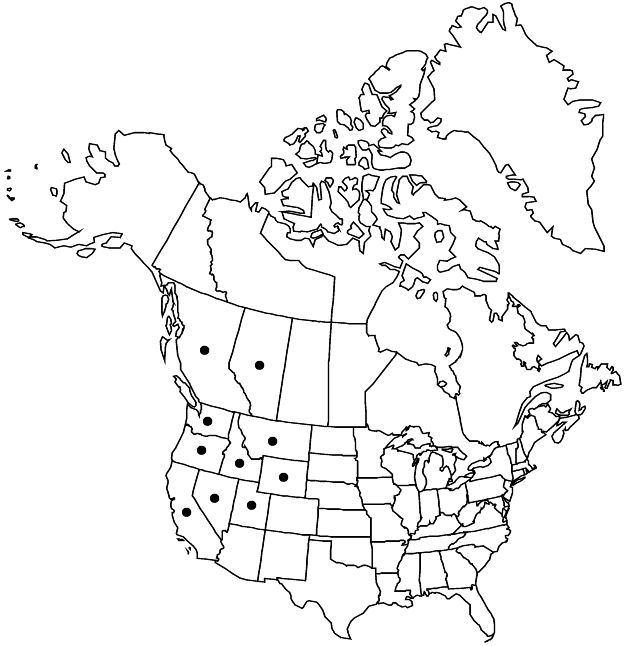Drymocallis pseudorupestris var. saxicola
J. Bot. Res. Inst. Texas 1: 37, figs. 1M–R. 2007.
Stems 0.6–2.5 dm, base 1–2 (–3) mm diam., short hairs sparse to moderately abundant, sometimes absent. Basal leaves 3–9 (–15) cm, sparsely to densely hairy (hairs to 1.5 mm), usually densely peglike-glandular, not bristly; leaflet pairs (2–) 3 (–4); terminal leaflet broadly obovate-cuneate, 0.8–2 (–4) × 0.7–2 (–3) cm, teeth single or ± double, 3–8 (–12) per side. Pedicels 3–15 (proximal to 20) mm, usually not bristly, short hairs sparse to moderately abundant (sometimes absent). Flowers (2–) 3–12 (–20); hypanthia and sepals not bristly or bristles less than 1 mm; epicalyx bractlets linear-lanceolate to broadly elliptic, 2–5 × 1–1.5 mm; sepals 4–6 (–7) mm; petals ± overlapping, not red-tinged, narrowly to broadly obovate, 4–8 (–9) × 3–6 (–8) mm; filaments 1–2.5 mm; styles usually golden brown, rarely reddish.
Phenology: Flowering May–Aug.
Habitat: Cliffs, ledges, outcrops, ridges, talus slopes, lava beds, other rocky habitats
Elevation: 1000–3400 m
Distribution

Alta., B.C., Calif., Idaho, Mont., Nev., Oreg., Utah, Wash., Wyo.
Discussion
Variety saxicola accommodates the bulk of specimens previously placed in Potentilla glandulosa var. pseudorupestris, minus the extremes at the northeastern and southern ends of the species range. The circumscription here encompasses significant heterogeneity, which might be resolved into additional taxa upon further analysis [for example, the dwarfed high elevation form of P. glandulosa noted by N. H. Holmgren (1997b)]. Some collections from Alberta and Washington have petals as large as those of var. pseudorupestris but are here included in var. saxicola on the basis of stature. Plants from southwestern Idaho and southeastern Oregon combine features of D. lactea and D. pseudorupestris, some being atypically tall (to 5.5 dm) but with the vestiture and saxicolous preference of var. saxicola. In contrast, populations on Steens Mountain, Oregon, including the type of D. pumila Rydberg, have the typical habit of var. saxicola but the vestiture of D. lactea; their optimal placement is unresolved. In California, var. saxicola occurs in the Cascade Range (Mount Lassen, Mount Shasta) and extends sporadically south through the Sierra Nevada to Tulare County, intergrading with var. crumiana and D. lactea.
Selected References
None.
Lower Taxa
"thin" is not a number."wide" is not a number."dm" is not declared as a valid unit of measurement for this property."dm" is not declared as a valid unit of measurement for this property.